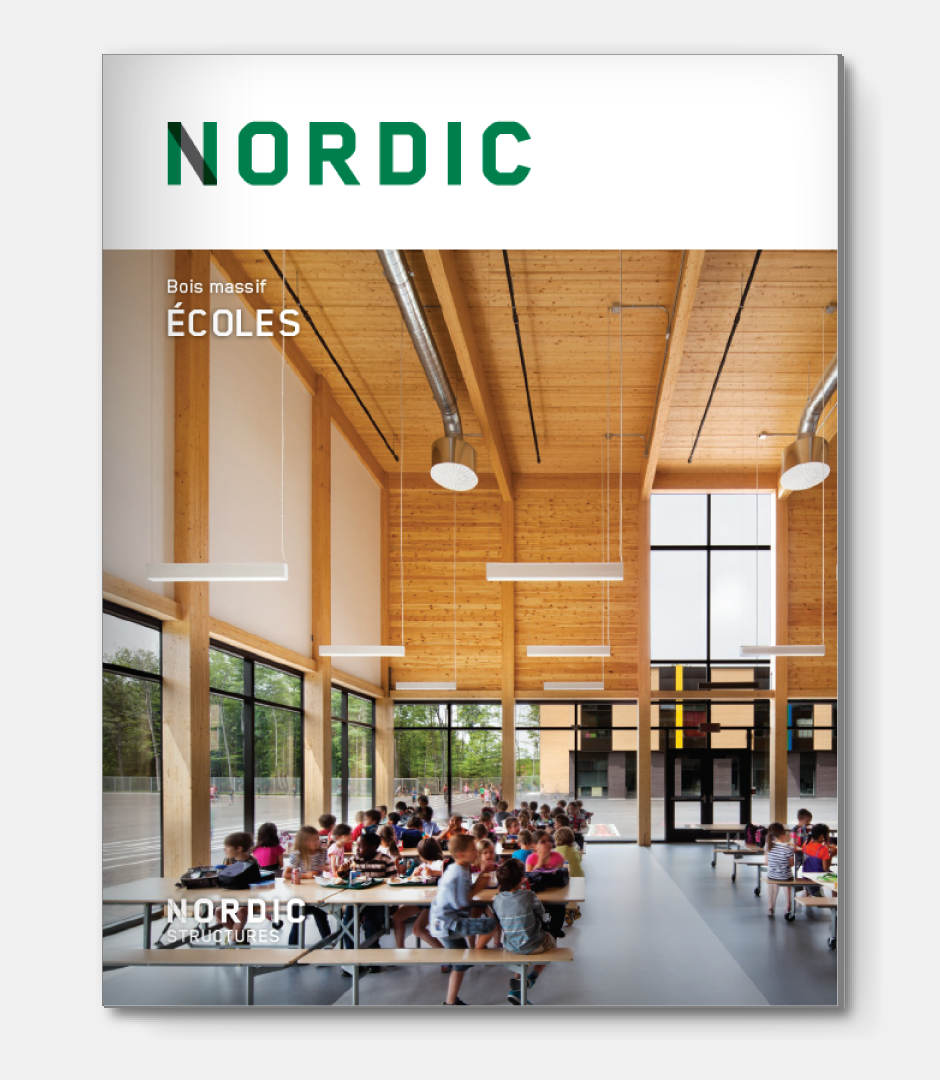Mass timber schools
Smart construction for future generations
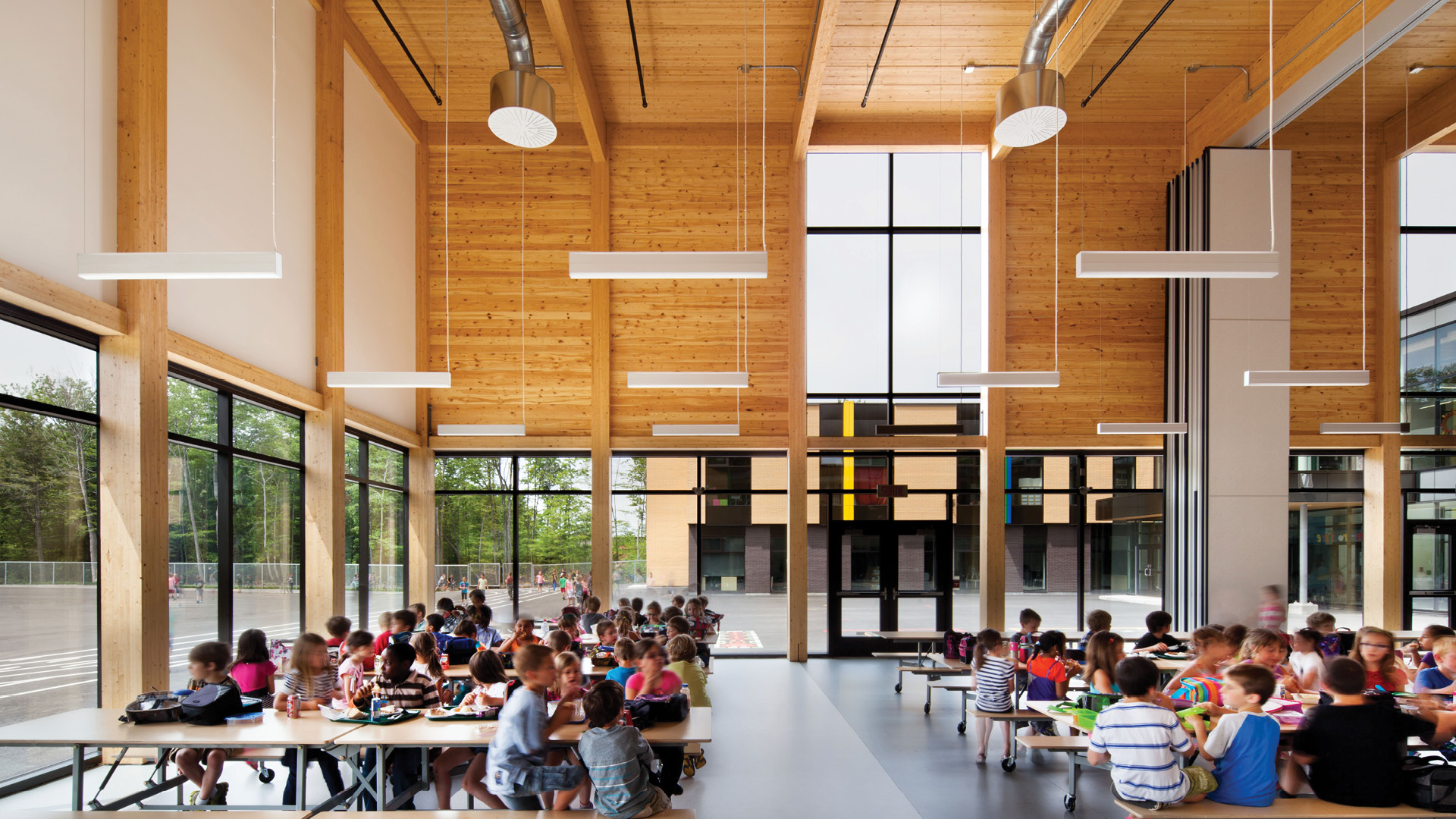
Choose mass timber for considered competitive and high-performance educational spaces
Experts agree that the quality of a school’s physical space positively impacts the success of its students. In recent years, educational systems around the world have sought to change how schools are designed, favouring the construction of environments that do more to foster learning.
The physical, ecological and architectural properties of wood make it a material of choice for 21st-century schools. Mass timber schools are being built by the dozens throughout North America and Europe. Cost effective, durable, attractive and ecological, they truly represent the way forward for school construction.
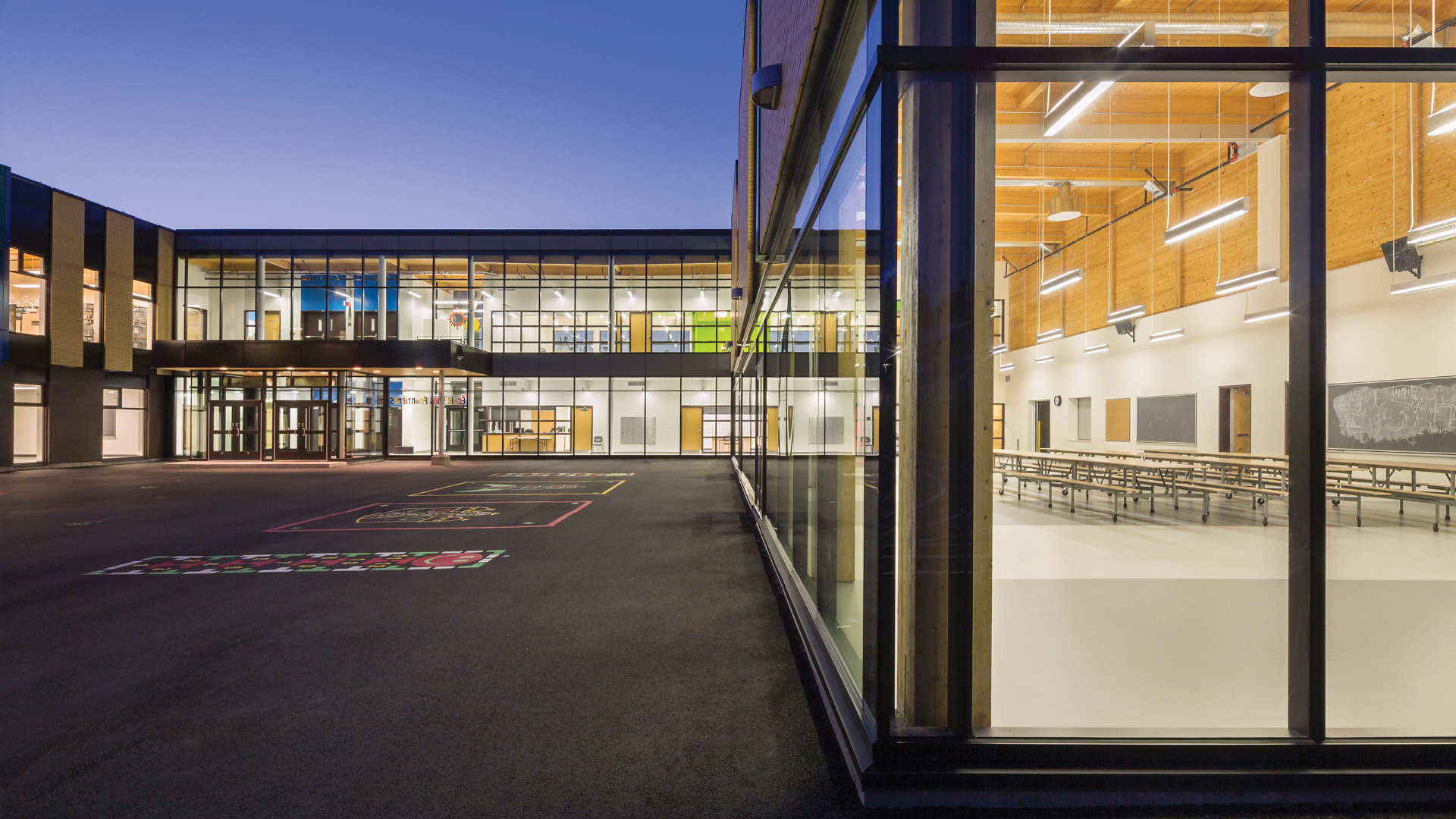
Advantages of wood schools
Less costly, more durable buildings
- Lower construction costs
- Longer-lasting structures
- Easier, inexpensive and time-efficient maintenance
- Shorter delivery times thanks to local supply chains and regional processing, in addition to integrated design and manufacturing
- Non-corrosive and very fatigue-resistant
A myriad of environmental benefits
- Higher energy efficiency in buildings
- A renewable resource
- 26–31% lower greenhouse gas emissions
- CO2 storage
Esthetic and architectural qualities
- Warm, open spaces that foster learning
- Greater architectural flexibility
Economic benefits for Quebec
- Utilization of a natural resource that is at the heart of Quebec’s economic development at both the provincial and regional levels
- Job creation
- Innovation and economic diversification
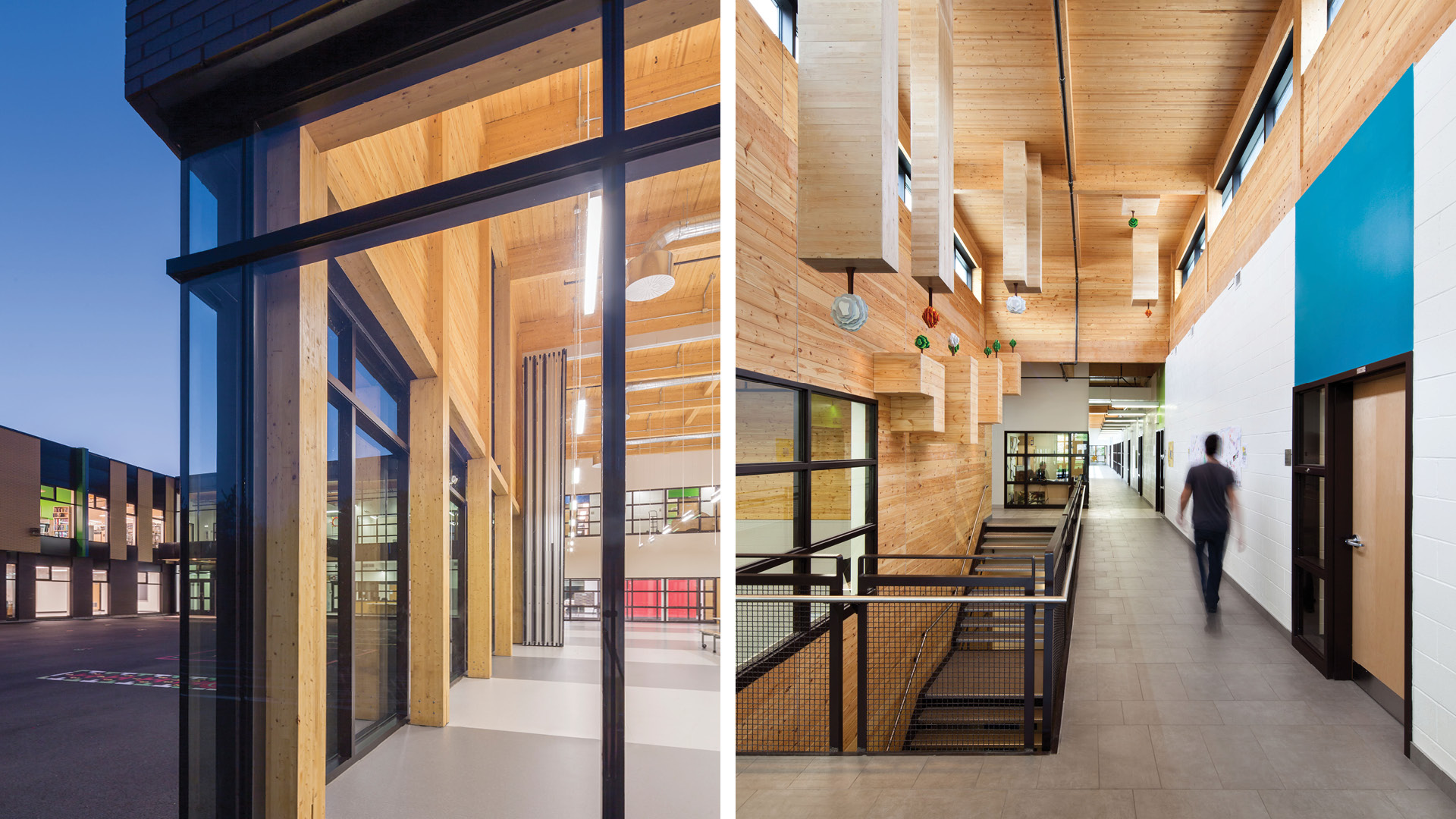
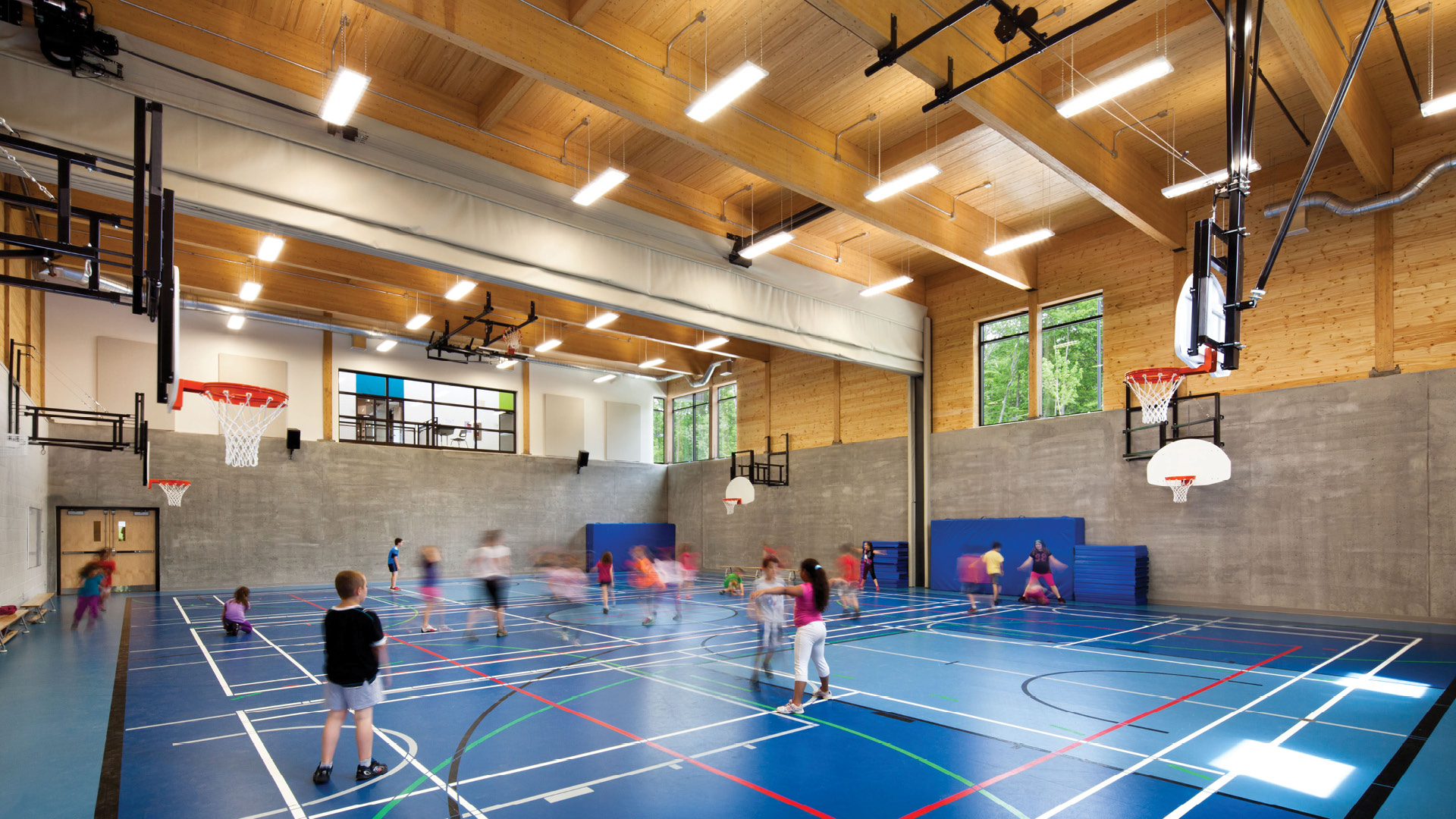
Did you know?
Researchers at the University of British Columbia have found that when wood is visible within a building, the stress levels of its occupants decrease.1
